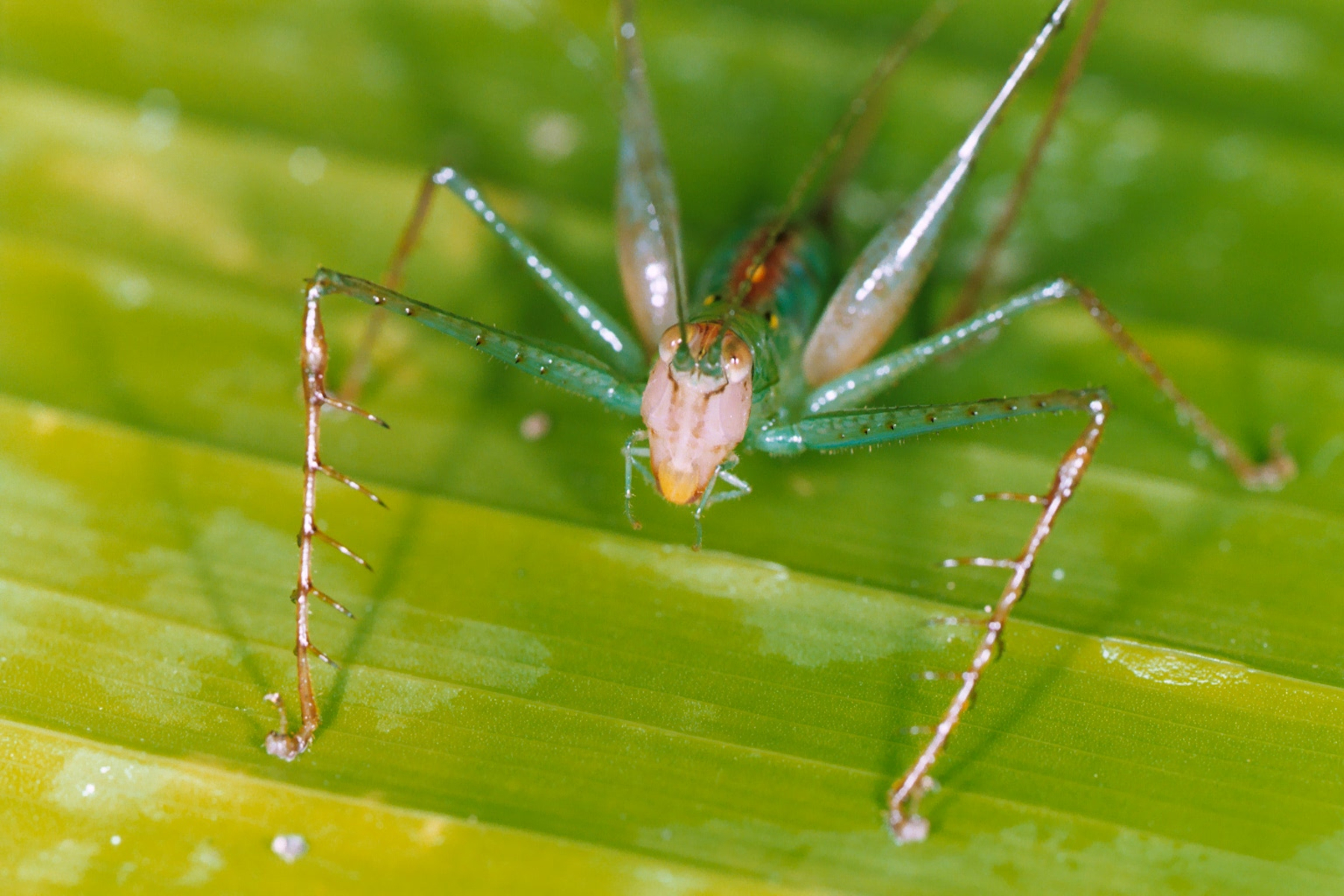Katydids (bushcrickets) are insects known for their acoustic communication, with the male producing sound by rubbing its wings together (stridulation) to attract distant females for mating. But these newly discovered insects turn ultrasonic calling all the way up to 11 on the dial - males reach a frequency of a startling 150 kHz. For comparison, the calling frequencies used by most katydids range between 5 kHz and 30 kHz while nominal human hearing range ends at around 20 kHz.
Thus, the new genus has been named Supersonus. But that rapid wing movement comes at a price - reduced wing size means they can't fly. Speculation is that the adoption of extreme ultrasonic frequencies might play a role in avoiding predators, such as bats, and of course there is the possibility that evolution just got drunk and went on a random walk again. Bats can detect their prey’s movements using echolocation but can also eavesdrop and detect the calls of singing animals like katydids and frogs. Rainforest katydids have learned to avoid bats by reducing the time spent singing and by evolving an ear that can detect the ultrasonic echolocation calls of the bats. Although some bats can detect 150 kHz, by singing at extreme ultrasonic frequencies, the katydid calls degrade faster with distance so that a flying bat will find it harder to hear the signal.

Female Supersonus. Credit: DOI:10.1371/journal.pone.0098708
Dr. Fernando Montealegre-Z from the University of Lincoln said, “To call distant females, male katydids produce songs by ‘stridulation’ where one wing (the scraper) rubs against a row of ‘teeth’ on the other wing. The scraper is next to a vibrating drum that acts like a speaker. The forewings and drums are unusually reduced in size in the Supersonus species, yet they still manage to be highly ultrasonic and very loud.
“Using a combination of state-of-the-art technologies, we found that Supersonus creates a ‘closed box’ with its right wing in order to radiate sound. Human-made loud speakers also use this system to radiate sound. Large speakers radiate low frequencies, while small speakers emit high frequencies. So, these reduced wings are responsible for tuning their calling songs at such high frequencies.”
Dr. James Windmill, from the Centre of Ultrasonic Engineering, University of Strathclyde, added, “These insects can produce, and hear, loud ultrasonic calls in air. Understanding how nature’s systems do this can give us inspiration for our engineered ultrasonics.”
Citation: Sarria-S F. A., Morris G. K., Jackson J., Windmill J.F.C,&Montealegre-Z F. 2014. Shrinking wings for ultrasonic pitch production: hyperintense ultra-short-wavelength calls in a new genus of neotropical katydids (Orthoptera: Tettigoniidae). PLoS One June 5 2014 DOI:10.1371/journal.pone.0098708





Comments